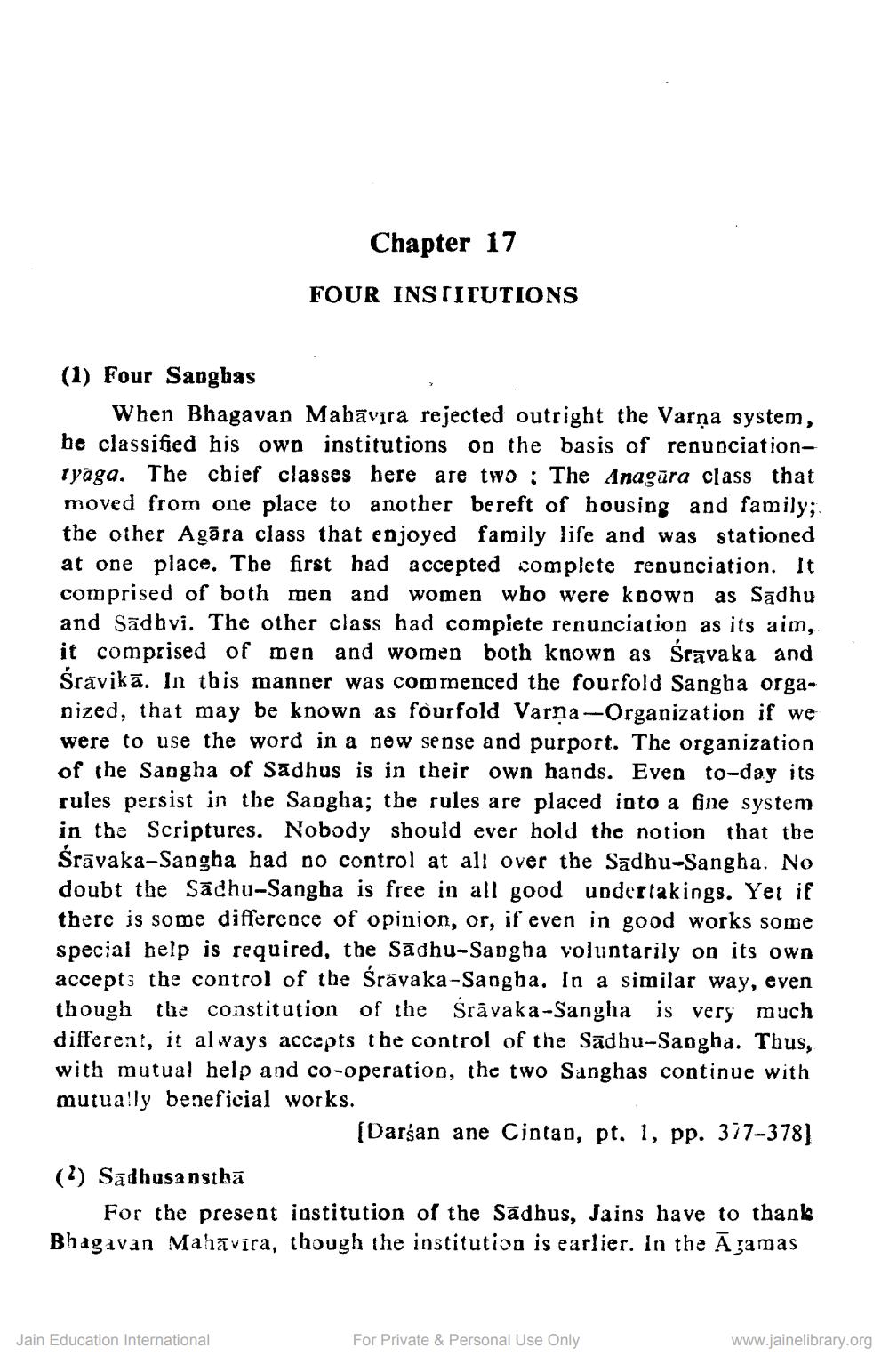________________
Chapter 17
FOUR INSTITUTIONS
(1) Four Sangbas
When Bhagavan Mabāvira rejected outright the Varņa system, he classified his own institutions on the basis of renunciationtyāga. The chief classes here are two : The Anagūra class that moved from one place to another bereft of housing and family; the other Agāra class that enjoyed family life and was stationed at one place. The first had accepted complete renunciation. It comprised of both men and women who were known as Sadhu and Sadhvi. The other class had complete renunciation as its aim, it comprised of men and women both known as Sravaka and Śrávikā. In this manner was commenced the fourfold Sangha organized, that may be known as fourfold Varna-Organization if we were to use the word in a new sense and purport. The organization of the Sangha of Sādhus is in their own hands. Even to-day its rules persist in the Sangha; the rules are placed into a fine system in the Scriptures. Nobody should ever hold the notion that the Šrāvaka-Sangha had no control at all over the Sadhu-Sangha. No doubt the Sachu-Sangha is free in all good undertakings. Yet if there is some difference of opinion, or, if even in good works some special help is required, the Sadhu-Sangha voluntarily on its own accepts the control of the Śrāvaka-Sangha, In a similar way, even though the constitution of the Srāvaka-Sangha is very much different, it always accepts the control of the Sadhu-Sangba. Thus, with mutual help and co-operation, the two Sanghas continue with mutually beneficial works.
(Darśan ane Cintan, pt. 1, pp. 377–378) () Sadhusapstbā
For the present institution of the Sadhus, Jains have to thank Bhagavan Mahavira, though the institution is earlier. In the Ājamas
Jain Education International
For Private & Personal Use Only
www.jainelibrary.org




